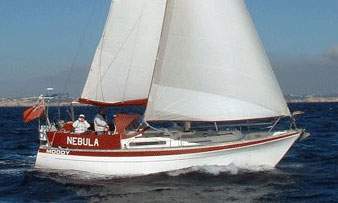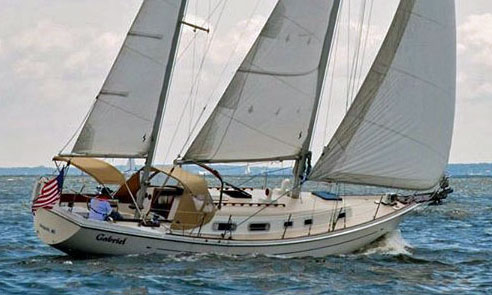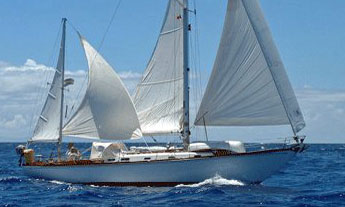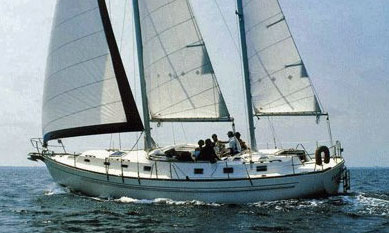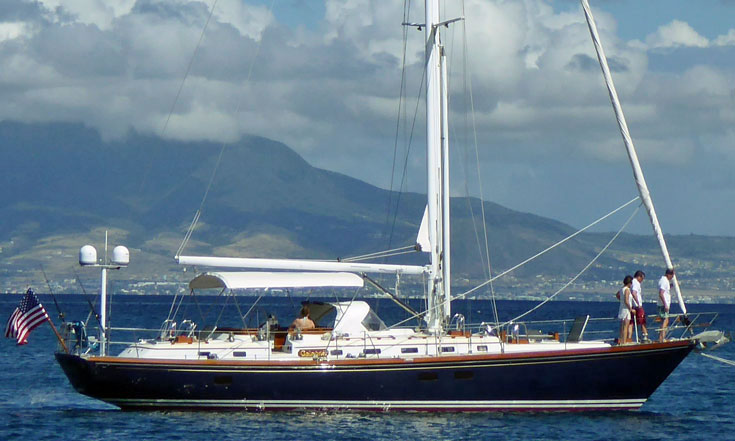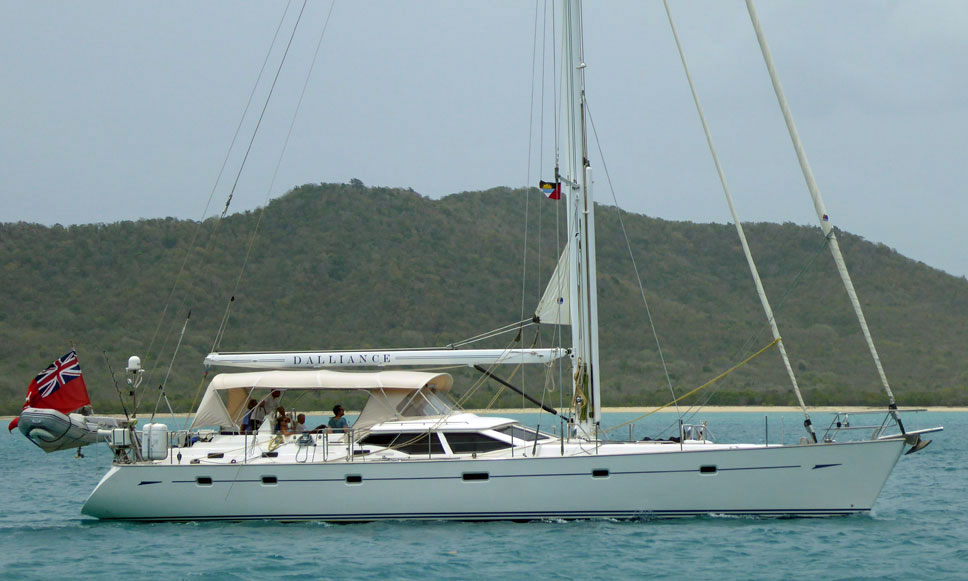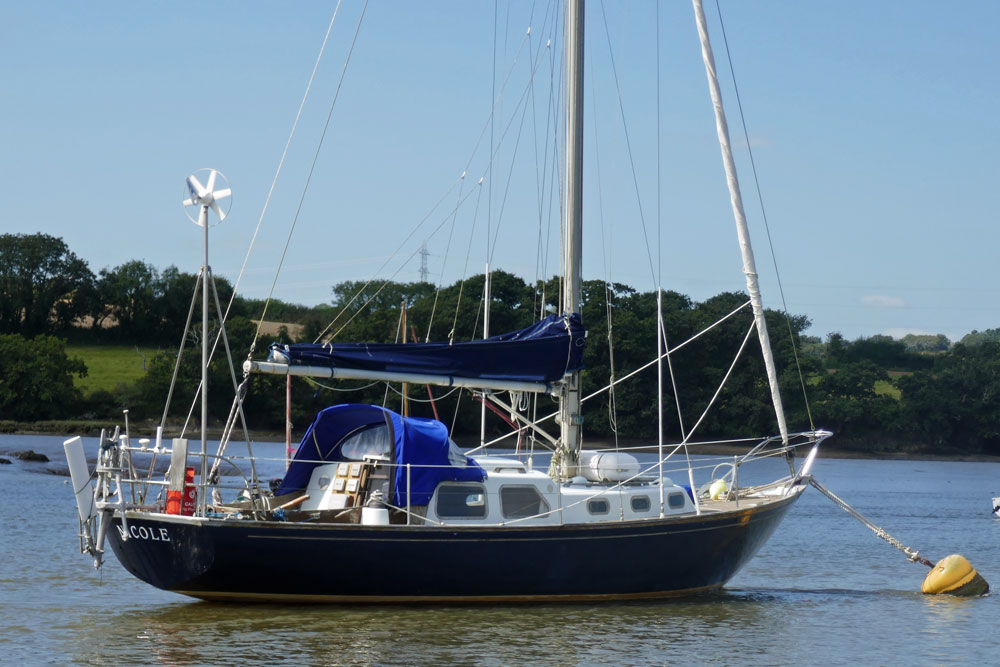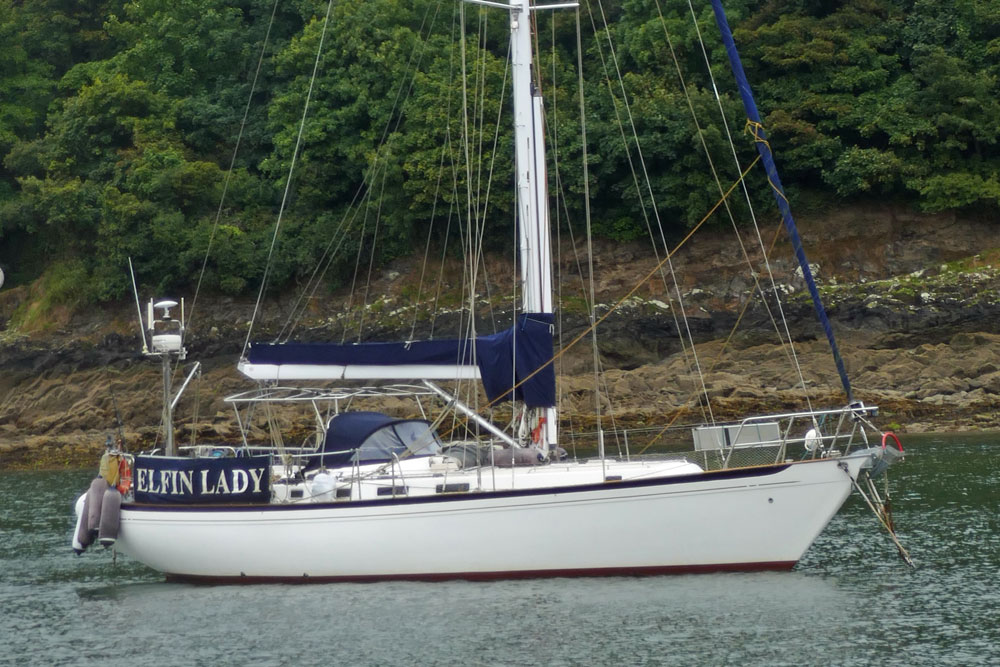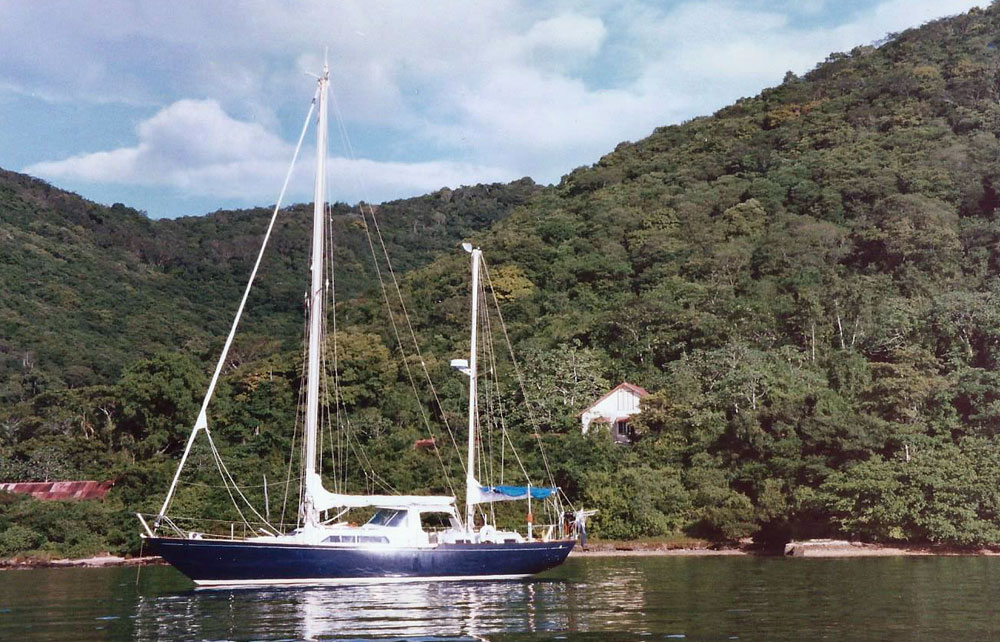- Home
- Cruising Yachts 30' to 35'
- Nicholson 32 Mk10
The Nicholson 32 Mk10 Sailboat
Specs & Key Performance Indicators
The Nicholson 32 Mk10 was designed by the British naval architect Charles A. Nicholson and built by Camper & Nicholson, a historic shipbuilding firm located in Gosport, Hampshire, England. This model is part of the Nicholson 32 series which began production in the early 1960s.
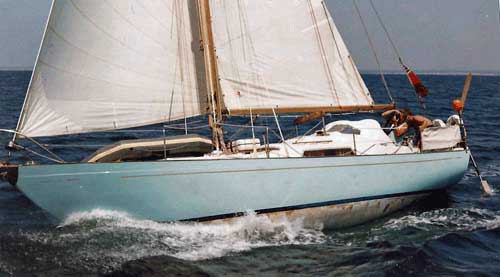 'Jalingo II', a Nicholson 32 Mk 10 beating to windward, helmed by an Aries windvane self-steering unit.
'Jalingo II', a Nicholson 32 Mk 10 beating to windward, helmed by an Aries windvane self-steering unit.Published Specification for the Nicholson 32 Mk10
Underwater Configuration: Fin keel & keel-hung rudder
Hull Material: Fiberglass
Length Overall: 33'0" (approximately 10.06 meters)
Waterline Length: 24'0" (approximately 7.32 meters)
Beam: 9'3" (approximately 2.82 meters)
Draft: 5'6" (approximately 1.68 meters)
Rig Type: Masthead Sloop
Displacement: 6,720 pounds (approximately 3,048 kilograms)
Ballast: 13,228 pounds (approximately 6,000 kilograms)
Designer: Peter Nicholson
Builder: Halmatic Ltd & Camper & Nicholson*
Year First Built: 1968
Year Last Built: 1981
Number Built: Approximately 370 units
* The hulls were moulded by Halmatic in Portsmouth and mainly fitted out by Camper & Nicholson.
Options & Alternatives
The Nicholson 32 was a development of the successful South Coast One Design (SCOD) and other proven Charles Nicholson designs like the nine-tonner, Jolina. Charles’ son, Peter, believed demand for custom yachts was dwindling and glass-fibre production yachts were the future. The Nicholson 32 had to meet three criteria. It had to be about 32ft (9.7m) long, easy to build and cost less than £5,000 at the time.
The Nicholson 32 went through 11 model upgrades, from Mk 1 to Mk 11. The Mk 10 (237-329) underwent major modernisation and restyling. The freeboard was raised 3in/75mm, enabling the coachroof to be lowered and the windows redesigned. The cockpit was enlarged by removing the afterdeck, increasing her length to 10m/33ft, and the offset companionway was moved to the centreline.
Sail Areas & Rig Dimensions
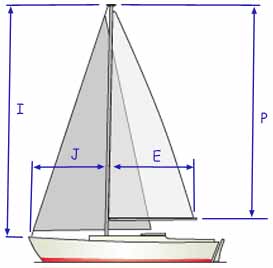 Sail Areas & Rig Dimensions
Sail Areas & Rig Dimensions- Mainsail: 228ft2 (21.22m2)
- Jib: 241ft2 (22.42m2)
- Total Sail Area: 470ft2 (44m2)
- I: 38'4" (11.7m)
- J: 12'7" (3.87m)
- P: 33'1" (10.1m)
- E: 13'9" (4.2m)
Where:
- “I” is measured along the front of mast from the highest halyard to the main deck. The main deck is where the deck would be if there were no deckhouse.
- “J” is the base of the foretriangle measured along the deck from the headstay to the mast.
- “P” is the luff length of the main-sail, measured along the aft face of the mast from the top of the boom to the highest point that the mainsail can be hoisted.
- “E” is the foot length of the main-sail, measured along the boom from the after face of the mast to the outermost point on the boom to which the main can be pulled.
Published Design Ratios
The Key Performance Indicators (KPIs)
- Sail Area/Displacement Ratio: 16.7
- Ballast/Displacement Ratio: 49.2
- Displacement/Length Ratio:441
- Comfort Ratio: 40.9
- Capsize Screening Formula: 1.6
The following analysis of the primary design ratios gives an indication of the boat's likely sailing characteristics, but see the 'Notes of Caution' that follow below:
- Sail Area/Displacement Ratio (16.7): This ratio, which measures the sail power relative to the boat's weight, is at the higher end of what is considered reasonable for good performance (16 to 20). Therefore, the Nicholson 32 Mk10 should have a reasonably good sail performance, offering a balance between power and control, albeit not being classified as highly powered.
- Ballast/Displacement Ratio (49.2): This is a high value, suggesting that the boat is designed to be stiff and powerful, capable of standing up well to the wind. It indicates that a significant proportion of the boat’s weight is dedicated to ballast, enhancing stability. However, the effectiveness of this ballast in terms of its positioning (whether deeper in the keel or more superficial) isn't addressed by this ratio alone. Therefore, while generally indicating good stability, the practical effects might vary based on the ballast placement within the keel's structure.
- Displacement/Length Ratio (441.2): This places the Nicholson 32 Mk10 in the 'Ultraheavy Displacement' category, suggesting that it is significantly heavy for its length. This boat will require more sail area to achieve its hull speed compared to lighter boats and can generally be expected to be more capable in heavy weather, but less agile and slower in light conditions.
- Comfort Ratio (40.9): Falling within the 40 to 50 range, this indicates a motion comfort level associated with a heavy bluewater boat. This suggests that the Nicholson 32 Mk10 should provide a relatively comfortable ride in rough seas, with less pronounced pitching and rolling movements compared to lighter boats.
- Capsize Screening Formula (1.6): A value less than 2.0 in this formula, which the Nicholson 32 Mk10 achieves, is generally indicative of a boat that is likely to have better stability and suitability for ocean passages. This lower value suggests a lower propensity for capsizing, which, when combined with the boat's other characteristics, reinforces its suitability for extended bluewater cruising.
Design Ratios: Notes of Caution...
- The Sail Area/Displacement Ratio (SA/D): This ratio provides an estimate of the sail power relative to the boat's weight, which can indicate potential speed in various wind conditions. But it doesn't account for the efficiency of the sail plan, the rigging, or the skill of the crew. Real-world performance can vary significantly based on these factors.
- The Ballast/Displacement Ratio (B/D): This ratio gives an idea of the boat's stability and stiffness, which is crucial for handling and safety. But it doesn't consider the distribution of the ballast or the hull shape, both of which can greatly affect stability. A high B/D ratio alone doesn't guarantee a stable boat if the ballast is poorly distributed.
- The Displacement/Length Ratio (D/L): This ratio helps predict the boat's speed potential and its behaviour in different sea conditions. But it doesn't account for the hull design or the boat's overall weight distribution. Two boats with the same D/L ratio can perform very differently if their hull shapes are different.
- The Comfort Ratio (CR): This ratio estimates the boat's motion comfort in a seaway, which is important for long passages. But it doesn't consider the boat's interior layout, which can also affect comfort. Additionally, personal tolerance to motion varies, so a boat that is comfortable for one person might not be for another.
- The Capsize Screening Formula (CSF): This formula assesses the likelihood of a boat capsizing in heavy seas, which is critical for offshore safety. But it doesn't take into account the boat's handling characteristics or the skill of the crew. A boat with a low CSF can still capsize if poorly handled in severe conditions.
General Limitations
- Static Nature: These ratios are static measurements and don't account for dynamic factors like wave action, wind gusts, or crew actions.
- Simplification: They simplify complex interactions into single numbers, which can be misleading. Real-world performance is influenced by a multitude of factors that these ratios can't fully capture.
- Context: The context in which the boat is used (e.g., coastal cruising vs. offshore racing) can greatly affect how these ratios should be interpreted.
In summary, while these ratios provide valuable insights into the theoretical performance characteristics of a sailboat, they should be used as part of a broader assessment that includes practical experience, sea trials, and expert advice.
More Specs & Key Performance Indicators for Popular Cruising Boats
The above answers were drafted by sailboat-cruising.com using GPT-4 (OpenAI’s large-scale language-generation model) as a research assistant to develop source material; we believe them to be accurate to the best of our knowledge.
Other sailboats in the Nicholson range include:
Recent Articles
-
Modern Boat Electronics and the Latest Marine Instruments
Dec 20, 25 05:27 PM
Should sailboat instruments be linked to the latest boat electronics as a fully integrated system, or is it best to leave them as independent units? -
Hans Christian 43: Classic Bluewater Cruiser & Liveaboard Sailboat
Dec 10, 25 04:37 AM
Explore the Hans Christian 43: a legendary heavy-displacement, long-keel sailboat. Read our in-depth review of its specs, design ratios, and suitability for offshore cruising and living aboard. -
Planning Your Sailboat Liveaboard Lifestyle: An Ocean Sailor's Guide
Dec 06, 25 05:18 AM
Seasoned sailors share their methodical risk analysis for planning a secure Sailboat Liveaboard Lifestyle, covering financial, property, and relationship risks.
